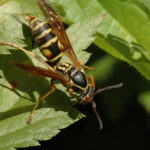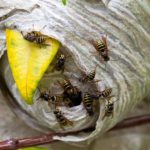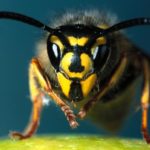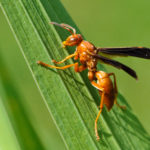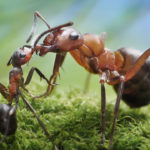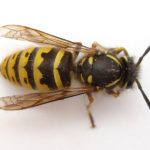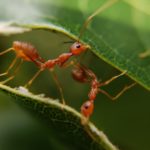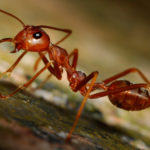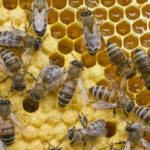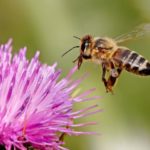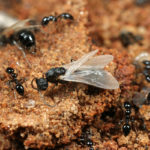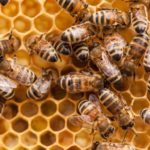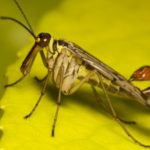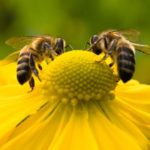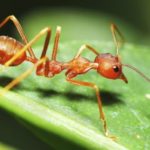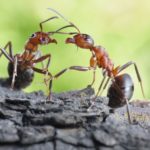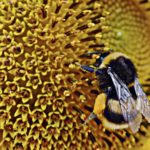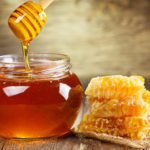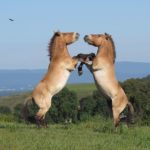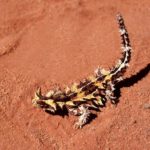Wasp
 Wasps are in many respects an insect unique, beginning with the image of their nutrition and reproduction, and ending with the composition of the poison and the abilities for self-defense. All wasps belong to the order of the Hymenoptera, which, besides them, includes also numerous bees, ants, bumblebees, riders and sawflies.
Wasps are in many respects an insect unique, beginning with the image of their nutrition and reproduction, and ending with the composition of the poison and the abilities for self-defense. All wasps belong to the order of the Hymenoptera, which, besides them, includes also numerous bees, ants, bumblebees, riders and sawflies.
Long-term studies of the representatives of this group led most evolutionary scientists to the conclusion that one part of insects (for example, riders and sawflies) are independent groups developing in parallel, and the other (bees and ants) are already descendants of ancient wasps. At a certain stage of evolution, they developed the ability to feed and rear their offspring only with the nectar of flowers (which is characteristic of bees), or wings were lost, and the way of life became ground or wood (this is the main distinguishing feature of ants).
Wasps are insects, among which practically equally are both solitary living and collective species. Therefore, for biologists, they are very convenient objects for studying the transition of animals from a single independent existence first to simple colonial life, and then to social interaction with the caste structure of the family.
Scientists have not yet come to a consensus on the stable and unambiguous classification of wasps. To date, they are divided into several families and groups, whose representatives, depending on the new studies conducted, sometimes move from one group to another.
The body of the wasps is divided into three distinct segments: the head, chest and abdomen, and has a strong outer chitinous skeleton. The head of the wasp is very mobile and is crowned with two antennae performing many functions: they catch smells and vibrations of the air, with the help of which the insect can evaluate the taste of liquid food and measure the length of the honeycomb in the nest.
Each wasp is endowed with nature with powerful jaws – mandibles. They serve both for feeding vegetable food – soft fruits, berries, flowers – and for killing prey. For example, most hornets, attacking even such large insects as cockroaches and praying mantises, practically do not use the sting, but quite manage only with strong jaws that successfully shatter the chitinous covers of their victims.
The velocity of the wasp is rather high, but, however, is not a record for insects in general. That’s why even well-armed striped predators often themselves become victims – for example, large carnivorous flies and dragonflies.
As for the coloring, then the wasps are also distinguished from all other insects by a decent variety. For example, some types of paper and flower wasps have bright contrasting black and yellow stripes and look so that they can not be recognized.
Other species can have a completely different color: from saturated black to turquoise and violet. In any case, the color of the body of these insects is always well recognized (especially in the animal kingdom) and allows them not to fall prey to an accidental attack, scaring away many mammals and birds.
The dimensions of the a axis vary widely. Thus, for example, the giant scoliosis from Southeast Asia grows to 6 cm in length; Not much behind it and the Asian giant hornet – about 5-5.5 cm. But the overwhelming majority of representatives still have more standard for insects sizes. In this case, usually (but, nevertheless, not always) the size of the body corresponds to the degree of danger of the insect.
